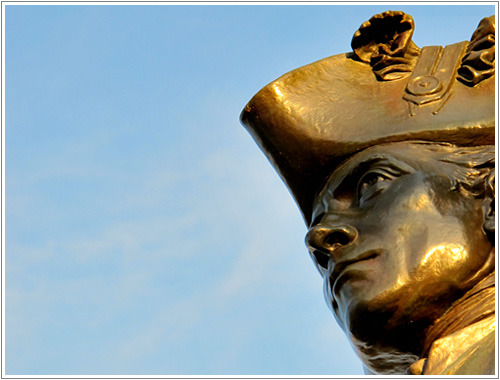- First, he briefly establishes the Status Quaestionis of the role of the Spirit of God in Paul and, especially, his letter to the Galatians. At a pivotal point in the letter Paul asks, "Was it by works of the Law that you received the Spirit? Or was it by hearing of faith?" While the answer is clear (Paul simply could not be proposing that the Galatians received the Spirit via Torah-observance!), the significance of the Spirit for Pauline thought and rhetoric is not. Morales argues that the connection between the outpouring of God's Spirit and the restoration of Israel provides the key to understanding Paul's argument in Galatians.
- Second, he surveys the intersection of God's gift of his Spirit and the promise of Israel's restoration among the prophetic Hebrew biblical writings (specifically, Isaiah, Ezekiel, and Joel) in Chapter 2 and among Second Temple Jewish texts in Chapter 3. His aim is not to identify how Paul reads either biblical or extracanonical texts but rather to assess how Paul takes up and employs themes and concepts current among (roughly) contemporaneous expressions of Jewish thought. Key among these themes are, among others, new creation and new exodus imagery, the heart and its need for renewal, and the sonship of God's people.
- Third, Morales turns to Galatians 3–4 (Chapter 4) and Galatians 5–6 (Chapter 5) to bring the material from previous chapters to bear on the exegetical discussion. I am currently at the beginning of Chapter 4, so I cannot say very much at all about Morales's hermeneutic or exegetical work. But his handling of the texts in Chapters 2–3 has been responsible and cautious, and so I don't anticipate problems here.
Except . . .
Morales makes a comment almost in passing (it's even in a footnote) regarding the shift in late-Second Temple Judaism from metaphorical understandings of "resurrection" (and of "death," too) toward literal interpretations. He says, "The key transformation that Paul brought about was the idea that one figure would be raised in the middle of history, and that others would somehow participate both anticipatorily and ultimately in that eschatological life" (79, n. 5; my emphasis). I have some problems with the phrase "middle of history," because I'm not sure that helpfully frames Paul's rhetoric. Would Paul affirm the present as "the middle of history"? Or would he see in Christ's resurrection the dawning of the new age and the fading of the old? But given the complexities of the dynamics of what are commonly referred to in Christian theology as the "now-and-not-yet" (complexities which Morales recognizes), we likely won't solve that problem here.
But I have bigger problems with the idea that this was, somehow, a "key transformation" for which Paul was responsible. I'm not at all opposed to the idea that individuals affect, sometimes dramatically, how and what their cultures think. And clearly Paul is one of those individuals. But after reading Jerry Sumney's essay, "'Christ died for us': Interpretation of Jesus' Death as a Central Element of the Identity of the Earliest Church," pp. 147–72 in Reading Paul in Context: Explorations in Identify Formation (FS William Campbell; Edited by K. Ehrensperger and J. B. Tucker; LNTS 428; London: T&T Clark International, 2010), I'm a bit more suspicious of the image of Paul-the-theological-revolutionary than I previously was.
Certainly Paul takes this idea—viz., that the future resurrection was inaugurated and even is proleptically exprienced in Christ's resurrection—and advances it considerably. But here's the question Sumney has taught me to ask: Is it really likely that the pre-Pauline church had not already developed some idea of the inaugurating/proleptic/"middle of history" resurrection of Jesus? How would the earliest Christians, whom Paul the Pharisee (who almost certainly accepted the notion of bodily resurrection in the age to come even before his experience on the Damascus road) saw fit to persecute, have connected their eschatological ideas of resurrection with the experiences of Jesus as raised "according to the Scriptures" (see 1 Cor. 15.3–5)? Is it not more likely that this was one of the ideas Paul found incomprehensible, and so he sought to stamp them out from Israel? Can't we understand the failure of the disciples to understand Jesus' so-called "Passion predictions" in Mark's Gospel (almost certainly later than Paul's letters) as suggesting that this very point caused problems for Jesus' followers prior to their experiences of Easter?
Of course, I'm only raising questions; I have very little to offer by way of answers. In many areas Paul was almost certainly theologically avant-garde. But in some areas—perhaps in many areas—Paul inherited ideas from those around him, whether Jewish, Greek, or even early (or proto-)Christian influences. In the balance of things, do we really want to think that Jesus' earliest followers had to wait for Paul to come around before they began wrestling with the connection between pre-Christ[ian] eschatological ideas about resurrection and the Easter Event? I find this very unlikely.
Still, to end on a positive note, Morales's book is very easy to read. Even if you find it difficult, the thesis he's pursuing (and the evidence he considers) is well worth the effort it takes to access his argument.


No comments:
Post a Comment